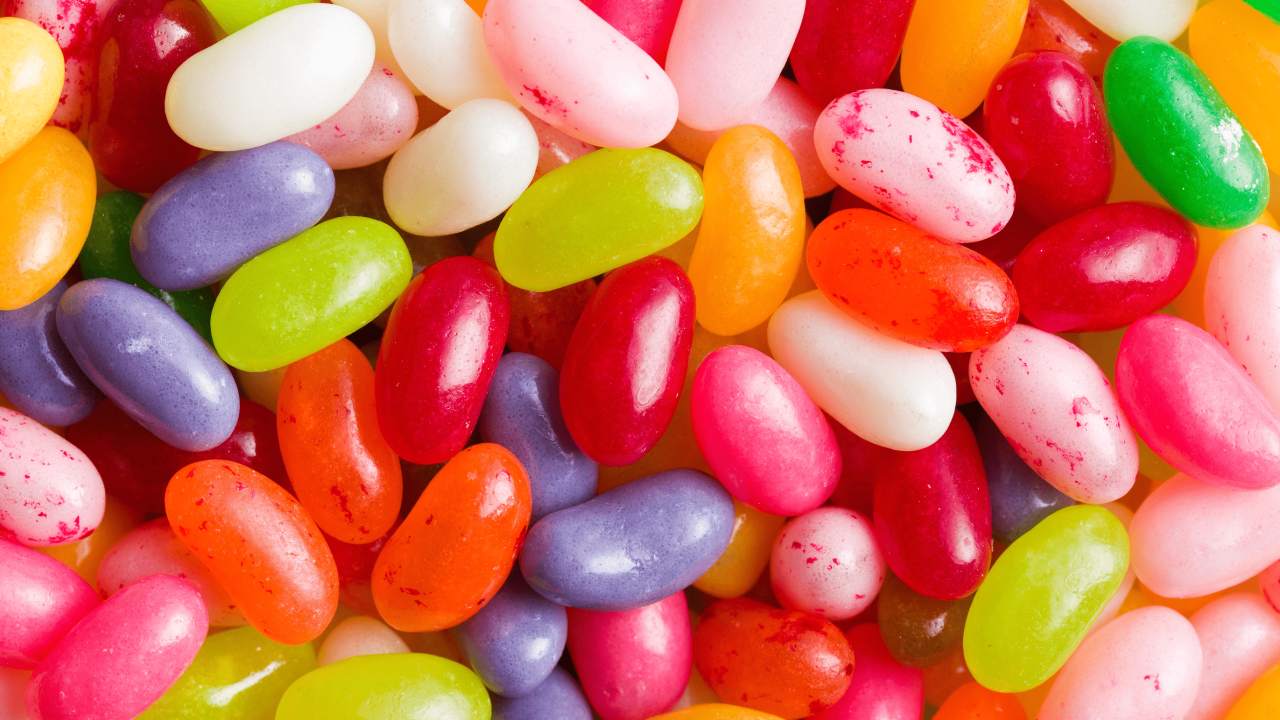
Spring has sprung, and so have store shelves with seasonal sweets. But don’t let the allure of their bright colors fool you – these treats come with health hazards that aren’t so sweet, prompting an urgent need for regulatory change.
Whether you’re cracking open an Easter egg, looking for a treat during Passover or snacking at night during Ramadan, jelly beans are a candy staple for this time of the year. But they’re packed with food dyes linked to various health harms, including behavioral difficulties, developmental issues and cancer.
The Food and Drug Administration has done little to address this issue or regulate chemicals of concern. Instead, states and some food manufacturers are choosing to step up and take action.
Artificial food dyes
The FDA approved six artificial food dyes for use in food and beverages in 1931 (with Red No. 40 added in 1971). The bright colors in jelly beans and other ultra-processed foods are a result of these seven color additives.
Classic jelly bean brands contain a combination of these colorings, including those with themed packaging from kids’ TV shows and flavors mimicking popular candies like Skittles and Starburst.
These dyes are also common ingredients found in other grocery store products, especially in those consumed by children, according to a 2022 study.
But the FDA hasn’t reviewed any of these food dyes since the period between 1969 and 1986, despite new evidence suggesting potential health harms.
Health harms
The negative impacts of artificial food dyes are particularly concerning for children, who may be at risk for increased sensitivity to the effects of artificial colorings, according to the California Office of Environmental Health Hazard Assessment. Despite this sensitivity, the FDA approves the use of these dyes.
Notably, studies show that Red No. 3 causes cancer in animals. This chemical is found in various jelly bean brands and seasonal candies, including chocolate eggs.
And dyes such as Red No. 40, Yellow No. 5 and Yellow No. 6, which account for 90 percent of food dyes used in the U.S., may cause learning problems and inattentiveness. As little as one milligram of Yellow No. 5 has caused behavioral effects in the most sensitive children.
Although numerous studies stress the harms associated with these dyes, regulations remain unchanged, highlighting a severe lack of FDA oversight on these chemicals.
Regulation of color additives
In the absence of federal action, states are stepping up. State lawmakers are pushing legislation banning these hazardous dyes from use in food products.
In California, Assemblymember Jesse Gabriel (D-Encino) introduced a bill to ban the use of hazardous food dyes in school foods. If enacted, schools would be required to report dyes used in school foods. The state has already banned the use of Red Dye No. 3.
Other states are following in California’s footsteps. Pending bills in New York, Illinois, Washington, Missouri, South Dakota, West Virginia, Rhode Island, Maryland and Pennsylvania would ban the use of Red Dye No. 3, along with other hazardous chemicals, in food and beverage products throughout the states.
Even without federal regulation, companies, under market pressure, are beginning to make their products without artificial color additives. The makers of Peeps will completely remove Red No. 3 after this Easter.
Other companies use natural alternatives. In 2016, Kraft swapped Yellow No. 5 and Yellow No. 6 with plant-based annatto, paprika and turmeric in its signature mac and cheese.
Looking for alternatives?
No candy, typically made with sugar, is very healthy or nutritious, so it’s important to eat it in moderation. And the best option is always a piece of fresh fruit.
But if you want a treat to celebrate a holiday or the arrival of spring, here are a few dye-free alternatives to jelly beans that can be just as rewarding:
- Chocolate-covered raisins. Satisfy your sweet tooth while steering clear of harmful food dyes.
- Popcorn. Buying kernels and popping them on the stove, instead of in the microwave, is healthier. The microwave version may contain food dye (and the packaging could contain harmful chemicals, including the “forever chemicals” known as PFAS). Add butter, salt and other toppings to your liking.
- Dried fruit. Dried fruits can be just as colorful as jelly beans without the extra chemicals.
- Cereal and granola. These traditional breakfast foods can be as sweet and fun as candy and snacked on by the handful any time of day.
- Fruit snacks and leather. Another sweet, tasty alternative that also has added nutrition.
- Dye-free jelly beans. Although most jelly beans include a long list of dyes, some are made without these chemicals.
These alternatives may be dye free, but it’s important to always check products for ingredients of concern. Make sure to consult EWG’s Food Scores database when grocery shopping.
###



